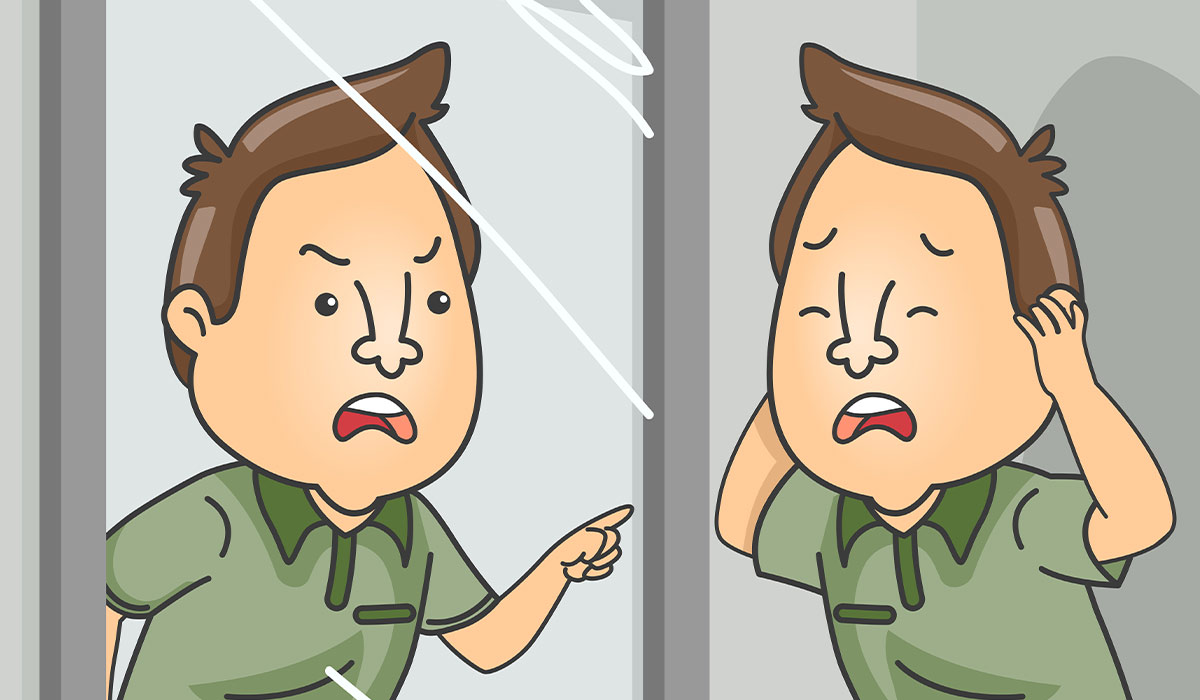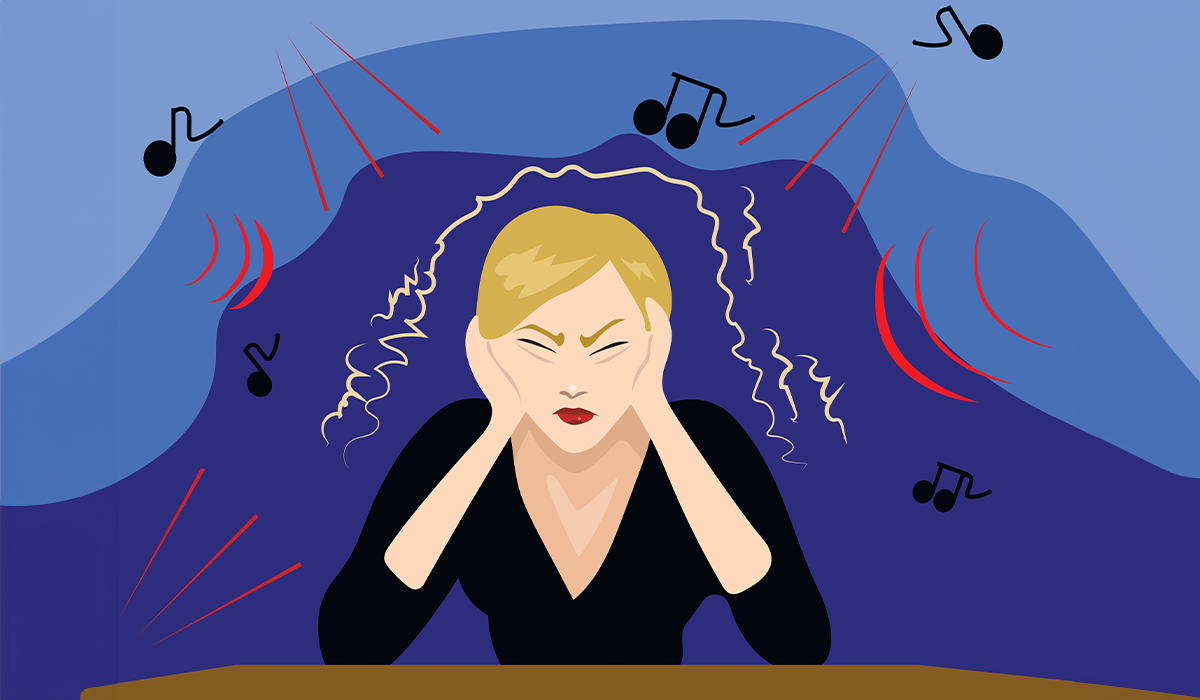Borderline Personality Disorder (BPD) usually reveals its first symptoms during adolescence. BPD is a hazardous personality type. The tendency to self-harm and impulsiveness is a dangerous combination. There is a very high suicide rate among people with Borderline Personality Disorder.
Typically, a person's mature personality can provide all the necessary skills. People with well-formed personalities can find their way in our world. But some people can not adapt to society's expectations. In forming their personalities, certain rigid, maladaptive traits have formed that prevent them from adequately performing specific roles expected by society. These people can be diagnosed with a disorder of personality, once called a “disorder of character.”
Classifications such as the DSM and ICD are collections of disorders that aid diagnosis. Specialists develop and update these classifications, isolating the symptoms necessary to diagnose a disorder. We will present the symptoms of Borderline Personality Disorder consistent with the American DSM-5.
The diagnosis of personality disorders is complicated, and personality disorders are not as precisely defined as most other diagnostic categories. British researchers noticed that diagnoses based on information from people who know the patient is more reliable and accurate than diagnoses based solely on interviews with patients themselves. So it is noteworthy that BPD can be misdiagnosed.
The DSM-5 divides personality disorders into three groups. The grouping is aimed at determining the similarity of various conditions. Borderline Personality Disorder belongs to group B disorders. Individuals with bundle B personality disorder tend to behave theatrically, show their emotions excessively, and vie for other people's attention. Their mood is highly volatile, and they often experience intense conflicts. In addition, the B group also includes Narcissistic Personality, Antisocial Personality, and Histrionic Personality.

Borderline personality disorder (BPD) usually reveals its first symptoms during adolescence. BPD is a hazardous personality type. The tendency to self-harm and impulsiveness is a dangerous combination. There is a very high suicide rate![]() among people with Borderline Personality Disorder.
among people with Borderline Personality Disorder.
One study even found that having BPD has a higher predictive score for suicide than depressive disorders. Individuals with BPD often have completely co-occurring symptoms as well. Patients with BPD often have lower self-esteem, and they also feel a lack of meaning in life. Borderline Personality Disorder is also associated with excessive stress and depressive states.
What most characterizes people with BPD is instability in interpersonal relations![]() . Their interactions with those around them are unstable and cause them to feel insecure. Fearing a real or imaginary situation of abandonment by a loved one, they make desperate efforts to keep them with them. Considering these characteristics, it should be assumed that such people generally have a history of several intense but tumultuous relationships, which naturally began with idealized friends or lovers and ended in bitter disappointment and regret.
. Their interactions with those around them are unstable and cause them to feel insecure. Fearing a real or imaginary situation of abandonment by a loved one, they make desperate efforts to keep them with them. Considering these characteristics, it should be assumed that such people generally have a history of several intense but tumultuous relationships, which naturally began with idealized friends or lovers and ended in bitter disappointment and regret.
Individuals with borderline disorder are characterized by very unstable moods- to minor events, they often react with violent outbursts and cannot control their anger. This emotional instability makes people with BPD prone to gambling and risky behavior, such as unprotected sex. On top of it, addictions, stimulants, and eating disorders are common.
Manipulative suicide attempts are also another typical behavior of personality disorders of this type. Because individuals with BPD are insecure, they feel constantly disrespected and can threaten suicide or verbally attack their partner for any reason. On the other hand, self-harm is also a prevalent symptom. Typically, self-harm provides relief from the anxiety or dysphoria experienced. But in people with BPD, such conditions may be accompanied by an inability to feel pain under a pain stimulus.
In addition to it, people suffering from this disorder also experience problems in defining their identity. They are unable to develop a stable image of themselves. They may feel differently daily, unable to describe their character because of this variability. They also feel a sense of emptiness and lack of meaning in life. People with Borderline Personality Disorder may also manifest psychotic symptoms![]() . It includes brief episodes of loss of consciousness and contact with reality. Then there are delusions, hallucinations, or dissociations.
. It includes brief episodes of loss of consciousness and contact with reality. Then there are delusions, hallucinations, or dissociations.

The causes of Borderline Personality Disorder can be various. Researchers have identified two factors![]() – genetics and the occurrence of childhood trauma. These two factors may interact with each other. A greater risk of developing Borderline Personality Disorder will occur where there is a family history of the disorder. Some researchers believe that genetic factors may be linked to specific symptoms. It includes symptoms such as emotional vacillation, severe anxiety, or general mental instability.
– genetics and the occurrence of childhood trauma. These two factors may interact with each other. A greater risk of developing Borderline Personality Disorder will occur where there is a family history of the disorder. Some researchers believe that genetic factors may be linked to specific symptoms. It includes symptoms such as emotional vacillation, severe anxiety, or general mental instability.
We can also see a strong correlation between severe stressful situations and trauma in childhood![]() and Borderline Personality Disorder. Unpleasant childhood experiences such as violence, abuse, and general insecurity always take their toll on a person's psyche, and it increases the risk of developing personality disorders.
and Borderline Personality Disorder. Unpleasant childhood experiences such as violence, abuse, and general insecurity always take their toll on a person's psyche, and it increases the risk of developing personality disorders.
A disorder like BPD can be successfully treated or even completely cured. Proper therapy increases patients' quality of life. We also remind you that BPD is not a disease. BPD is an abnormal, fixed way of functioning in everyday life. Treatment for the disorder is usually lengthy, but psychotherapy and pharmacotherapy can significantly improve quality of life. First, a proper and accurate diagnosis is needed. Then the choice of the therapy method. Therapy can be supported by pharmacological treatment if the therapist sees the need.
Thus, as we mentioned, diagnosing personality disorders can be a complicated task. Specific symptoms may indicate a particular personality disorder. But they may also result from a completely different type of disorder. Borderline Personality Disorder is very complex, with many symptoms appearing in other disorders. For example, impulsivity and risky behavior can also occur in episodes of mania in Bipolar Disorder.
Therefore, when a specialist suspects a personality disorder in a patient, they must make a comprehensive insight. A single behavioral screening interview may not be enough. More information is needed to determine what is behind the abnormal behavior throughout the patient's life.
Psychologists use various therapeutic methods, depending on which scientific theories they rely on. Everyone's psychological approach explains the mechanism of personality disorder formation and points to the best possible therapy program. The treatment of Borderline Personality Disorder is a challenging but required process. Patients without proper help are exposed to many dangers associated with their symptoms. We will now present the types of therapy that are most often chosen to treat Borderline Personality Disorder.

Experts wonder which type of therapy is best for people with BPD. However, it isn't easy to determine. Everyone is an individual and may have different needs. If you want to discover which type of therapy would be best for you, try various forms of therapy. Then you can check which is best based on your results.
There is no denying that people with BPD face numerous difficulties. Making the public aware of mental health issues is also very important in personality disorders. Lack of proper help for people with Borderline Personality Disorder can end tragically. Borderline Personality Disorder requires diagnosis and therapy, but patients may face stigma![]() after diagnosis.
after diagnosis.
Very often, the stigma even comes from mental health workers![]() . It can significantly affect treatment outcomes and reduce patients' quality of life. Negative attitudes among healthcare workers are a common phenomenon. Thus, it happens for reasons like professional burnout or the employee's attitude. In addition, people with BPD are challenging patients, requiring empathy and a unique approach.
. It can significantly affect treatment outcomes and reduce patients' quality of life. Negative attitudes among healthcare workers are a common phenomenon. Thus, it happens for reasons like professional burnout or the employee's attitude. In addition, people with BPD are challenging patients, requiring empathy and a unique approach.

Patients with Borderline Personality Disorder often distrust therapists at first. Gaining trust is a long process, and it is one of the goals of therapy. However, before BPD patients gain confidence, they may behave manipulatively and aggressively. It can influence emerging biases toward BPD patients even before therapy begins.
Therapists may be less effective if they have a negative attitude at the start. Fortunately, public awareness of mental health is more significant every year. Therapy methods are constantly being improved. The main goal is to increase patient well-being. However, BPD patients have to go long-term to get results. In addition to the difficulties associated with symptoms, they face entirely different challenges. In addition, professional therapy is still a privilege that not everyone can afford.
Borderline Personality Disorder significantly impairs people's functioning in many spheres of their lives. People with BPD face various risks – suicide, self-harm, dangerous behavior, gambling, and toxic relationships. It is, therefore, essential to remember and spread awareness that Borderline Personality Disorder can be effectively treated.
Despite the stigma and other problems, diagnosis has been shown to affect BPD patients' functioning positively. Proper diagnosis is, therefore, crucial, and therapy can reduce unpleasant symptoms. Personality disorders should not be treated as a disease. Personality determines the overall mental condition. Consequently, it is worth pointing out treatment methods.
Table of Contents

Antisocial personality disorders are mental dysfunctions that result in abnormal behavior of the individual. What are the typical behaviors? read more »

Dissociative identity disorder Ii is characterized by the presence of at least two independent and different personalities in one person.… read more »

What are the signs of narcissistic personality disorder? Learn, when it is time to start therapy. Check out, the ways… read more »

An introvert is a person with a special personality. Find out about the characteristics of introverts and how being an… read more »

An extrovert is an open and sociable person. The characteristics of this personality type affect various aspects of life. Find… read more »

Misophonia is an inappropriately strong reaction to specific sounds. It occurs in many disorders. Learn about the meaning of misophonia… read more »

Leprosy, also referred to as Hansen disease, is a chronic infectious disease that affects the skin, nose, limbs, and upper… read more »

Bipolar disorder is a mental disorder characterized by the alternation of extremely different mental states – depression and mania. What… read more »

Post-traumatic stress disorder is a specific psychological reaction to a highly stressful event. How does it manifest itself? What is… read more »